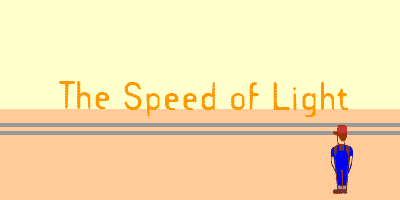
|
 |
 |
Think Like Einstein Part 2: The Speed of Light OK. Everything so far makes sense. Let's move on to the speed of light for a moment. In 1887 two American scientists performed a now-famous experiment. The experiment seemed to show that the speed of light was independent of motion. In other words, that light always travelled at the same speed: 186,000 miles per second. It didn't matter if the source of the light was moving or if the observer was moving. There was another indication that the speed of light was constant, too—one that Einstein found especially difficult to ignore. James Clerk Maxwell, the mind behind electromagnetic theory, had developed equations that described the nature of electricity, magnetism, and even light. These equations, the predictions of which were confirmed by experiment, by the way, implied that light always travelled at the same speed. Which brings us to the next question...  Again, you're on a train. This time, though, the train is moving much faster—at half the speed of light, or 93,000 mps (miles per second). And instead of throwing a ball, you turn on a flashlight. Question: How fast is the light travelling relative to the observer standing alongside the tracks? Sagan on Time Travel | Traveling Through Time Timespeak | Think Like Einstein | Resources Teacher's Guide | Transcript | Site Map Editor's Picks | Previous Sites | Join Us/E-mail | TV/Web Schedule About NOVA | Teachers | Site Map | Shop | Jobs | Search | To print PBS Online | NOVA Online | WGBH © | Updated November 2000 |